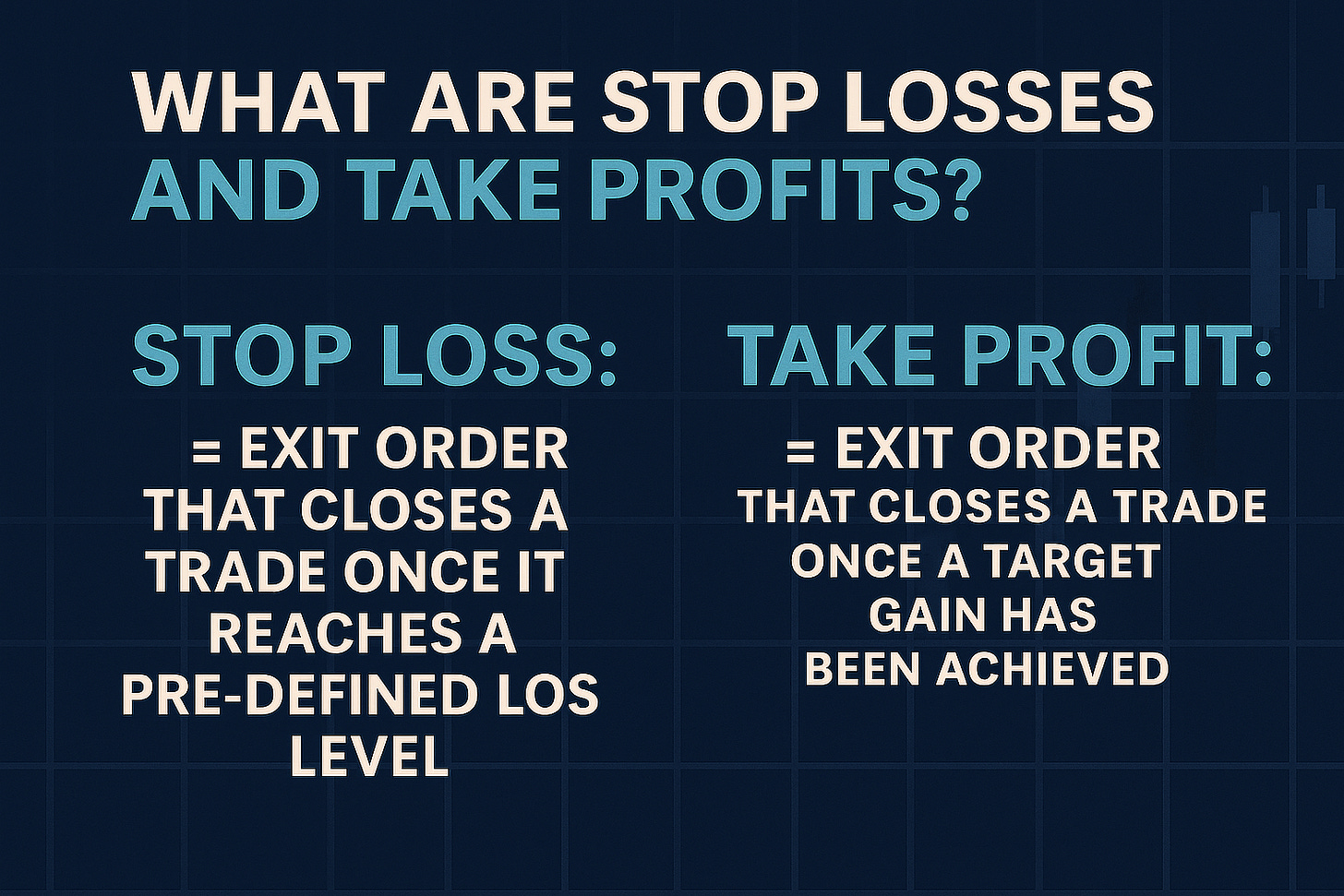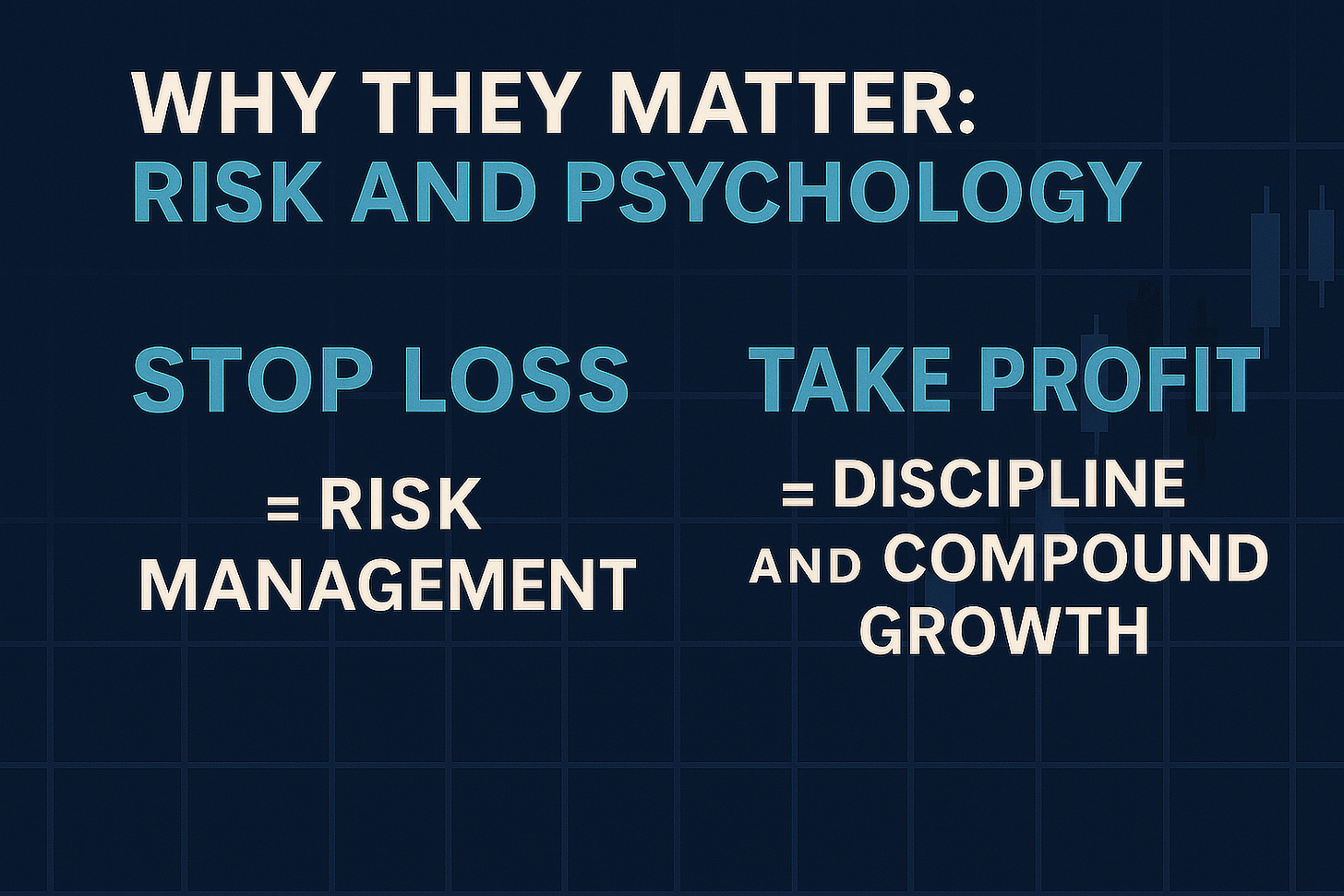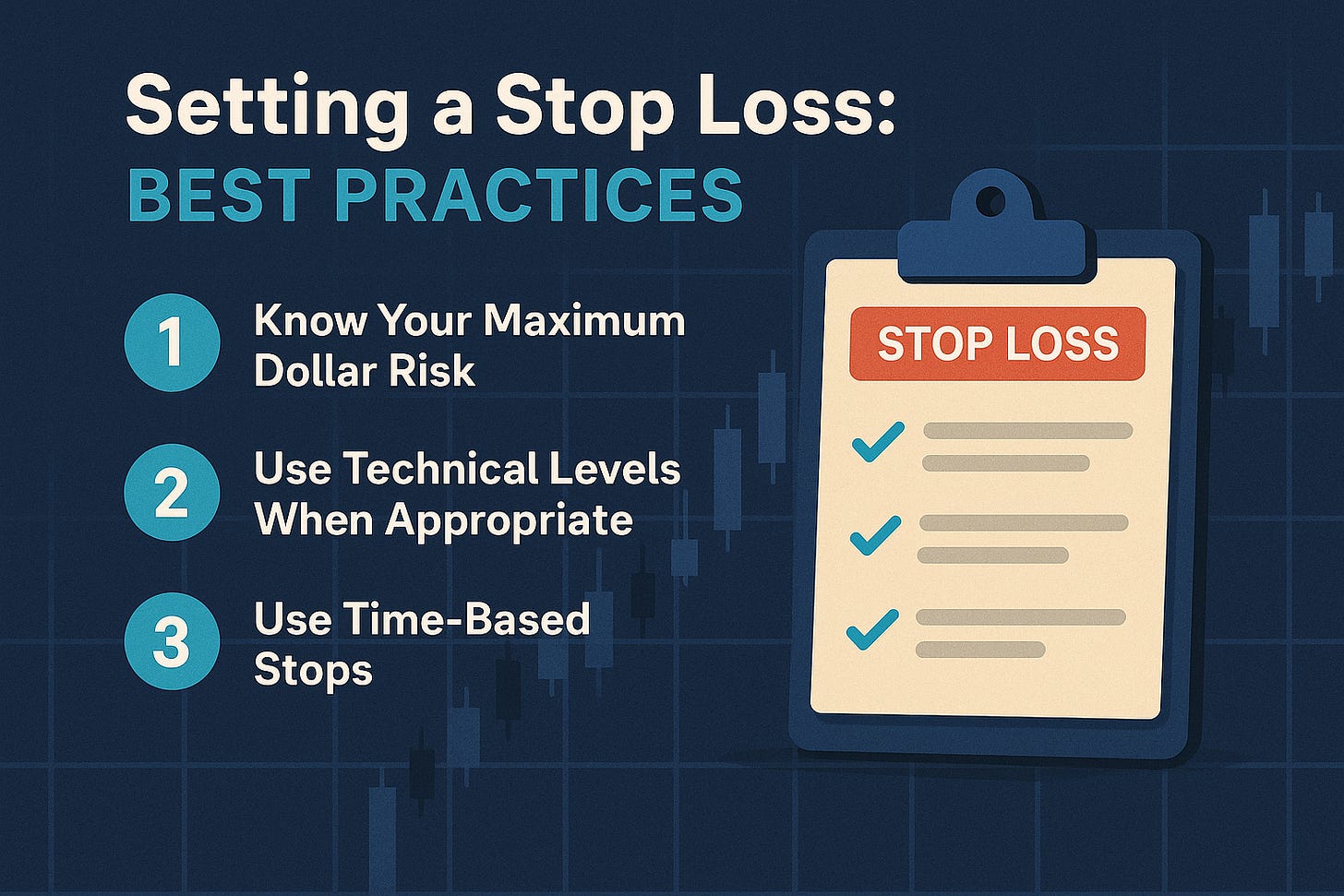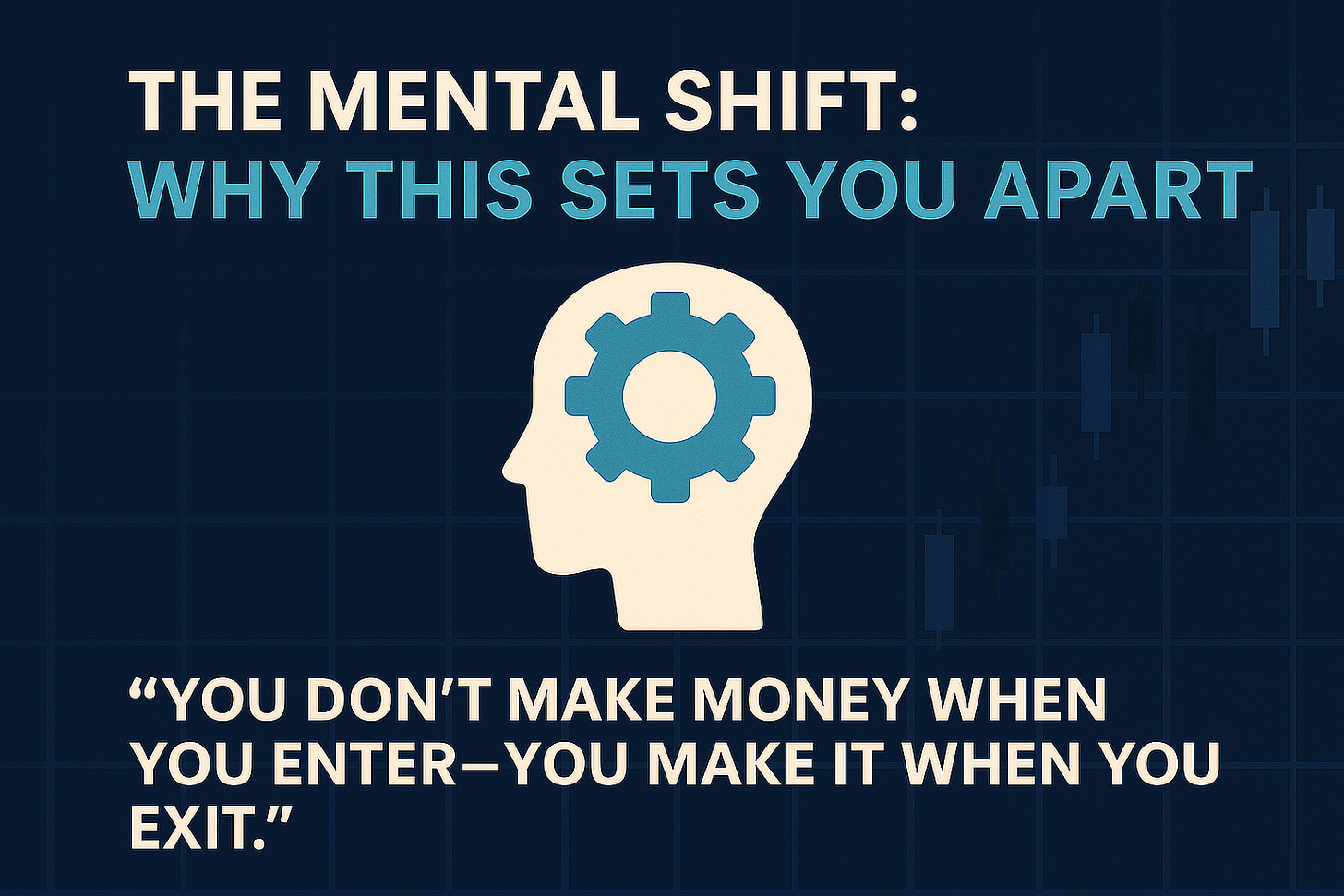Effective Use of Stop Losses and Take Profits
Best Practices for Protecting Gains and Managing Risk
If you want to succeed in trading, the question isn’t if you’ll take losses—it’s how well you’ll manage them.
And just as important as minimizing loss… is knowing exactly when to lock in your profit.
Two of the most powerful tools a trader has in this battle?
✅ Stop Loss Orders
✅ Take Profit Orders
Used properly, they protect your account, preserve your mindset, and give you a professional edge.
Used poorly—or worse, not at all—they open the door to emotional, undisciplined trading and unnecessary drawdowns.
This article will walk you through how to use stop losses and take profits effectively, including:
How to determine placement
How to adapt your rules based on strategy
The psychology behind exit planning
Practical frameworks used by elite traders
Let’s dive in.
What Are Stop Losses and Take Profits?
Before we get to the tactics, let’s cover the basics:
Stop Loss: An exit order that closes a trade once it reaches a pre-defined loss level. It’s your line in the sand.
Take Profit: An exit order that closes a trade once a target gain has been achieved. It prevents “giving back” profit.
In options trading, you can set these as:
Manual orders (closing at a dollar amount or percentage)
Conditional or bracket orders based on premium value
Trailing stops that move with the market
While stocks may use percentage-based stops, in options we often use dollar risk per contract or percentage of premium paid/collected.
Why They Matter: Risk and Psychology
1. Stop Loss = Risk Management
Successful traders think in risk units, not win/loss predictions.
A good stop loss keeps your maximum loss predetermined, keeping a small mistake from becoming a large one.
For example:
If you risk $100 per trade and lose three in a row, you’re down $300—but still alive.
If you risk uncontrolled amounts and let losses run? You may be wiped out by a single mistake.
2. Take Profit = Discipline and Compound Growth
Taking profits locks in wins and keeps you from holding too long hoping for “just a little more.”
Inconsistent profit-taking can result in:
Winning trades turning into breakevens or losses
Emotional regret and overcorrection
Poor risk-reward balance
Setting a Stop Loss: Best Practices
1. Know Your Maximum Dollar Risk
Before entering a trade, ask:
“How much am I willing to lose on this idea?”
This keeps your stop loss grounded in your account size and position size, not market emotion.
Example (options):
If you sell a put and collect $100, you might set a stop if the value rises to $150 (50% loss) or $200 (max loss).
2. Use Technical Levels When Appropriate
For directional trades (long calls, debit spreads, etc.), your stop loss should align with support/resistance, moving averages, or trend breaks.
Example: If SPY breaks below the 10 EMA, you close your debit spread.
Example: If a put credit spread goes in-the-money, you close at a 100% premium loss.
3. Use Time-Based Stops
Sometimes price doesn’t move, but time works against you.
Especially for short-dated options, you may want to exit early if the trade stagnates past a key point (e.g., 2 days before expiration).
Setting a Take Profit: Best Practices
1. Define Profit Target Before Entering
Don’t let greed decide when to exit. Know ahead of time:
% return or premium gain you want (e.g., 25% gain on debit spreads)
Time-based profit close (e.g., if 50% profit achieved in 1–2 days, exit early)
Debit spreads: Target a 25–50% profit of the amount paid
Credit spreads: Close when 50–75% of the premium is captured
Cash-secured puts: Close when 50% of premium is captured or if stock spikes upward
2. Use a Trailing Exit if Trend Is Strong
For breakout trades or momentum setups, you can let winners run by:
Using the 10 EMA as a trailing stop
Adjusting the stop manually each day
Taking partial profits, then trailing the rest
This hybrid model locks in gains while keeping upside open.
3. Don’t Try to “Top Tick” the Exit
You won’t catch the exact high. If you’re up 25–50% on a consistent setup, take it.
Holding too long risks reversals, especially as expiration nears.
Common Mistakes to Avoid
❌ No Stop Loss (Hope Trading)
Rookie traders think: “It’ll come back.”
Pros cut losses fast and preserve capital.
❌ No Exit Plan
Not planning take profits = letting emotion drive decisions. It often leads to:
Selling too early out of fear
Holding too long and round-tripping a win into a loss
❌ Adjusting Stops Emotionally
Moving a stop loss wider out of fear or frustration = increasing risk with no edge.
❌ Overexposure
Even with stop losses, risking too much per trade or opening too many trades at once can destroy your account.
How to Implement This in a Trading System
Pre-define stop loss and take profit for every strategy you use
Use a trade checklist
Write it down in your trading journal or spreadsheet
Automate when possible
Use conditional orders to remove emotion
If your platform doesn’t support this, set alerts at your exit thresholds
Track Your Exits
Review: Did you stick to your stop?
If not, why?
If you exited early, did it help or hurt long-term?
Adapt for Each Strategy
Different setups require different exit styles. For example:Income trades (CSP, credit spreads): Favor fixed exits and high win rate
Momentum trades (calls, breakouts): Favor trailing stops to capture large moves
The Mental Shift: Why This Sets You Apart
Most traders think the entry makes or breaks the trade.
But real professionals know:
“You don’t make money when you enter—you make it when you exit.”
Setting stops and targets removes ego from trading.
It lets you operate like a machine—not a gambler.
That’s what allows consistent traders to scale, grow, and replace their income with options.
Summary: Best Practices Checklist
✅ Always define your maximum dollar risk per trade
✅ Set take profit levels before entering
✅ Stick to your plan—even when emotions run high
✅ Use technical levels, time stops, or volatility to place exits
✅ Track your trades and review exit behavior regularly
✅ Adjust your system over time—but never mid-trade
Final Word: Replace Your Paycheck One Trade at a Time
If your goal is to grow consistent income through options, exits are just as critical as entries.
By using stop losses and take profits the right way, you:
Build account protection
Grow your confidence
Take control of your results
This is how you go from inconsistent to income-producing.
It’s how you replace your paycheck—one high-probability trade at a time.
🔗 Explore all my tools, trade alerts, and social links:
👉 https://linktr.ee/caseystubbs
Casey Stubbs
Freedom Income Options
Replace Your Paycheck, Reclaim Your Freedom.










